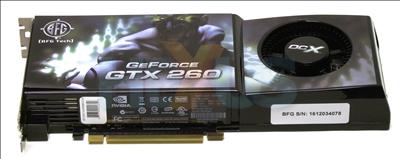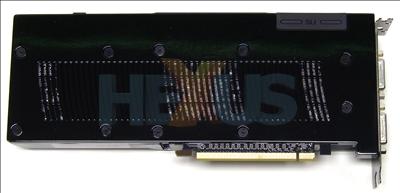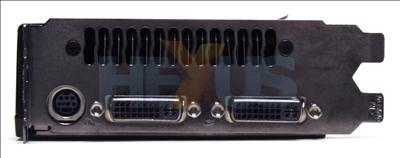OCX: heady speeds
Please head on over to our architectural look to see what makes the GeForce GTX 200-series tick along.
BFG sells four GeForce GTX 260 cards, running from the stock-clocked edition (576MHz/1,242MHz/1,998MHz for core, shaders and memory, respectively), OC model (596MHz/1,296MHz/1,998MHz), OC2 (630MHz/1,350MHz/2,126MHz), and range-topping OCX (655MHz/1,404MHz/2,250MHz).
The quartet are all air-cooled and use the reference heatsink, so you won't be able to discern any visual difference between them. Clearly, what BFG is doing is purchasing speed-binned cores and using different memory grades to ensure compliance at the stated frequencies.
Knowing that the stock-clocked model etails for around £175, BFG's sales partners charge around £200 for the OC, and £225 for the OCX - today's review card.
It all looks good on paper but there's a huge fly in the ointment, and it comes in the form of GeForce GTX 280 pricing, which now starts at £240, including VAT. The faster SKU employs more memory bandwidth, a larger frame-buffer, and a greater number of stream processors - 240 vs. 192 - for higher performance
Back on track, the OCX is only differentiated from its brethren by the sticker on the fan. As such, it's a quiet, cool-running card, albeit one that takes two slots.
The 896MB onboard memory is hidden underneath the cooling, and at 2,250MHz provides around 126GB/s of juicy bandwidth.
The back shows the enclosed nature of the cooling appendage.
The top-right section hides the SLI connectors that enable two- and three-way SLI.
You'll know what's here, right? A couple of dual-link-capable DVI ports and a mini-DIN socket for TV-out. Exhausted heat is pushed out of the back of the card through the vents you see at the top, which is cool (pun intended), minimising heat build-up inside your chassis.














